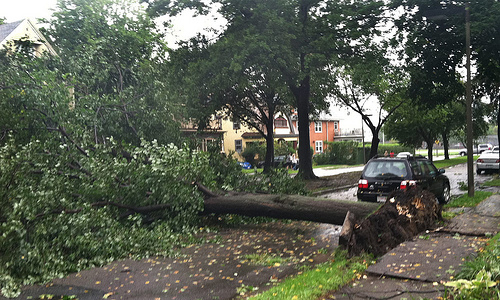The world is more constantly experiencing climate change, and Minnesota is not an exemption. In the recent years, severe weather occurs as early as the end of spring and the beginning of summer. While it’s difficult to predict when weather of such severity will hit, it is best that as early as the beginning of spring, we take all the necessary precautions to minimize all risks. There are steps you can take well in advance and on the day to minimize the damage to your home – both inside and outside.
Long before the storm strikes, you will want to perform the following tasks. These items are often an afterthought for those who have experienced substantial yard damage and doing so will minimize the headache of your post-storm clean up.
- Prune trees regularly to prevent loose or dead limbs from being picked up by fast winds and causing damage to the property of you and your neighbors. Regular pruning also makes trees more wind resistant. Be sure to remove the pruned pieces from your lawn.
- Talk to your insurance company to see what is – and more importantly, is not – covered regarding damage to your property. There are variations on what is covered in the instance of a neighboring tree falling onto your land and the appropriate removal of the debris.

While you should avoid going outside before a storm hits, the following preparation is recommended if a severe storm is expected.
- Write down items (such as lawn chairs, outdoor umbrellas, etc.) that you can bring inside your home. These items could be picked up by the wind and be damaged or damage the property surrounding it.
If your property does experience landscape damage, be sure to contact a professional such as Ostvig Tree Care. We are a licensed tree contractor with the proper insurance to provide tree removal and a staff with a great deal of experience.
Since severe weather is not a daily occurrence, many families feel rushed and panicked when it hits. Staying on top of what to do in the case of storms will take some of the stress out of the situation.
- Have a safety plan and discuss it with your children. Establish where you will meet and where you keep your disaster kit. Your disaster kit should contain items such as flashlights and a battery-powered radio and be assembled and kept in a constant, secure place.
- Keep watch for signs of severe weather and keep your eyes and ears open for updates.
- Stay inside and avoid electrical equipment. It is best to unplug electronics in times of excessive lightning, as well as sources of indoor water due to the ability of metallic pipes to transmit electricity.







